saxophonist Earl Bostic was a technical master of his instrument, yet remained somewhat underappreciated by jazz fans due to the string of simple, popular R&B/jump blues hits he recorded during his heyday in the '50s.
"I first learned of Earl Bostic in 1962 from my high school band director. He loaned me 2 albums to listen to. I was impressed and realised Bostic was special,I liked how he combined Jazz and R&B."
Earl Bostic in the flow playlist
Earl was a unique artist who participated in the inception of a new style of
instrumental R&B, incorporating elements of jazz, and dance music. His buzzing alto tone is iconic among dance bands from his era. Earl’s solos always had a special bounce and a beautiful songlike quality to them. Earl and his music existed inside a larger system that created the music that post-war America came to know. Whatever his circumstances, he always humbly gave his best and created music that will continue to thrill and inspire generations of dancers and music lovers.
Eugene Earl Bostic was born in Tulsa, Oklahoma on April 25, 1913. He was
introduced to music early on, playing clarinet and alto saxophone during his high school years. He was active with territory bands as early as 1930 when he played saxophone in trumpeter Terrence Holder’s band, The Twelve Clouds Of Joy. By that time, at age 17, Earl was already a skilled musician who could turn heads and operate under pressure. Buddy Tate, a reed player from Holder’s band, recalls hearing Earl play one night “around 1930” in Tulsa, when the band was looking for a saxophonist. He had heard Earl described as “fantastic” and able to do “everything on the sax” by another musician earlier in the night, and sure enough he heard Earl play “all over the horn...triple tonguing and doing everything”. After asking Bostic to join up with them, Tate recalls the band testing Bostic’s ability to read music:“the band director called ‘Louisiana Bo-Bo,‘ that hard one...we says [to Bostic], ‘Just knock it off; what tempo you want’...We let him stomp it off and we didn’t get out of the introduction. He ran through it like it’d throw your pants off...When they got through there was nobody [playing] but him and the drummer...[and] the drummer was tired...We let him alone after that.”
Earl also went to college after his stint with Holder’s band, first at Creighton University in Omaha, Neb raska for one year in the early 1930s. He remained musically active in Omaha, playing with an ROTC band as well as local jazz bands. In 1933, Bostic worked with Bennie Moten, a bandleader whom Moten biographer David E. Spies describes as “the pivotal figure in the development of jazz in Kansas City and the Southwest” and “responsible for developing the swing-era jazz orchestra or big band.”
After a run with Moten’s band, Bostic relocated to New Orleans to study at
Xavier University. There he developed familiarity with many instruments, and further honed his skills as a sight reader and arranger. He graduated with a Bachelor of Arts degree from Xavier in 1934, and set out to further his career as a professional musician. Addition to his alto saxophone, he could also be heard playing trumpet, guitar, and baritone saxophone.
Bostic made his first recording with Lionel Hampton in October 1939, with Charlie Christian, Clyde Hart and Big Sid Catlett. Before that he performed with Fate Marable on New Orleans riverboats.
He formed his own band in 1945 and made the first recordings under his own name for the Majestic label. He turned to rhythm and blues in the late 1940s. His biggest hits were "Temptation", "Sleep", "Flamingo", "You Go to My Head" and "Cherokee". At various times his band included Keter Betts, Jaki Byard, Benny Carter, John Coltrane, Teddy Edwards, Benny Golson, Blue Mitchell, Tony Scott, Cliff Smalls, Sir Charles Thompson, Stanley Turrentine, Tommy Turrentine and other musicians who rose to prominence, especially in jazz.
Bostic's King album entitled Jazz As I Feel It featured Shelly Manne on drums, Joe Pass on guitar and Richard "Groove" Holmes on organ. Bostic recorded A New Sound about one month later, again featuring Holmes and Pass. These recordings allowed Bostic to stretch out beyond the three-minute limit imposed by the 45 RPM format. Bostic was pleased with the sessions, which highlight his total mastery of the blues but they also foreshadowed musical advances that were later evident in the work of John Coltrane and Eric Dolphy.
He wrote arrangements for Paul Whiteman, Louis Prima, Lionel Hampton, Gene Krupa, Artie Shaw, Hot Lips Page, Jack Teagarden, Ina Ray Hutton and Alvino Rey. His songwriting hits include "Let Me Off Uptown", performed by Anita O'Day and Roy Eldridge, and "Brooklyn Boogie", which featured Louis Prima and members of the Brooklyn Dodgers.
Bostic was influenced by Sidney Bechet and (according to James Moody) John Coltrane was in turn influenced by Bostic. Coltrane told Down Beat magazine in 1960 that Bostic "showed me a lot of things on my horn. He has fabulous technical facilities on his instrument and knows many a trick." Moody mentioned that "Bostic knew his instrument inside out, back to front and upside down." If one listens carefully to Bostic's fabulous stop time choruses and his extended solo work, the roots of Coltrane's "sheets of sound" become clear.
In 1951, Bostic landed a number one R&B hit with "Flamingo," plus another Top Ten in "Sleep." Subsequent hits included "You Go to My Head" and "Cherokee." Bostic's bands became important training grounds for up-and-coming jazzmen like John Coltrane, Blue Mitchell, Stanley Turrentine, Benny Golson, Jaki Byard, and others. Unfortunately, Bostic suffered a heart attack in the late '50s, which kept him away from music for two years. He returned to performing in 1959, but didn't record quite as extensively; when he did record in the '60s, his sessions were more soul-jazz than the proto-R&B of old. On October 28, 1965, Bostic suffered a fatal heart attack while playing a hotel in Rochester, NY. ~
Stepin Fetchit - Lazy Richard - w/Earl Bostic
Bostic acts and plays saxophone in this Stepin Fetchit film short "Lazy Richard." Bostic is in the opening scene knocking on the door, then later he plays a remarkable alto solo with a band, it sounds like a trumpet.
Earl Bostic Deep Purple


































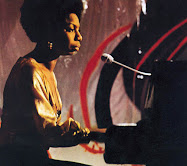

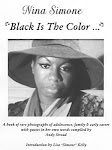

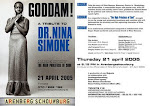

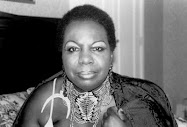






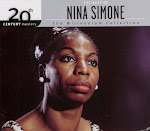



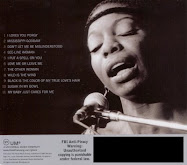
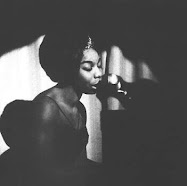

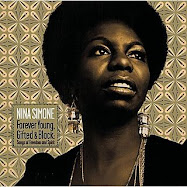









No comments:
Post a Comment